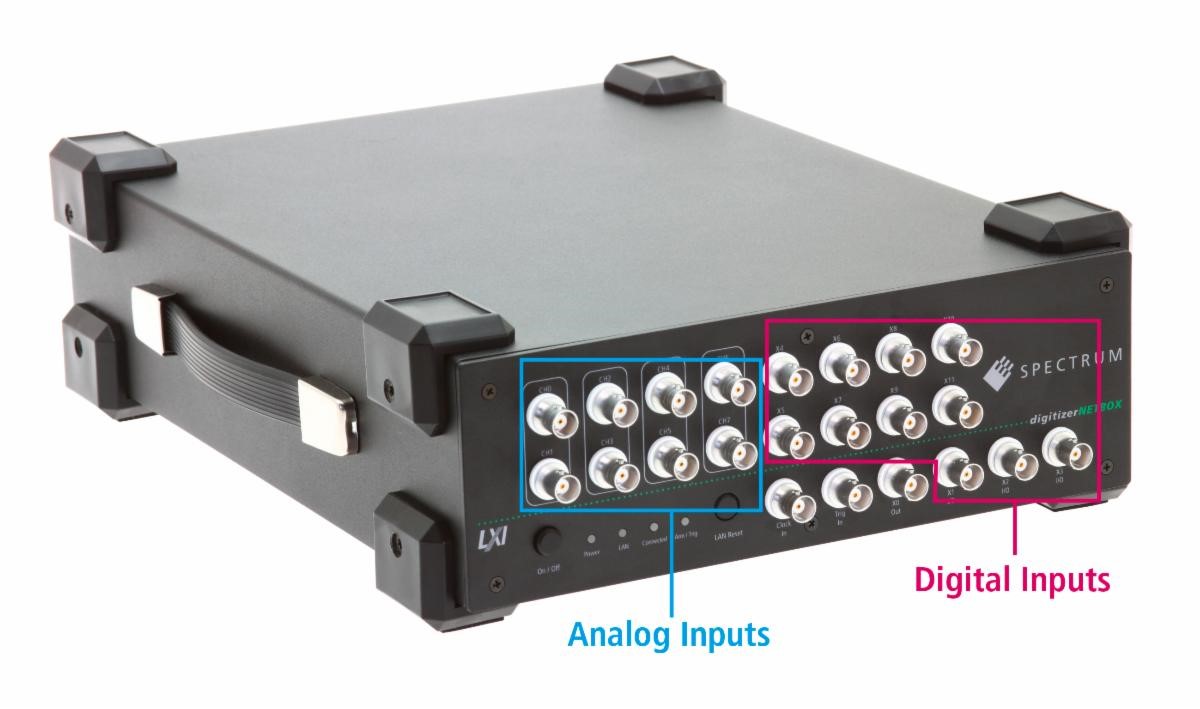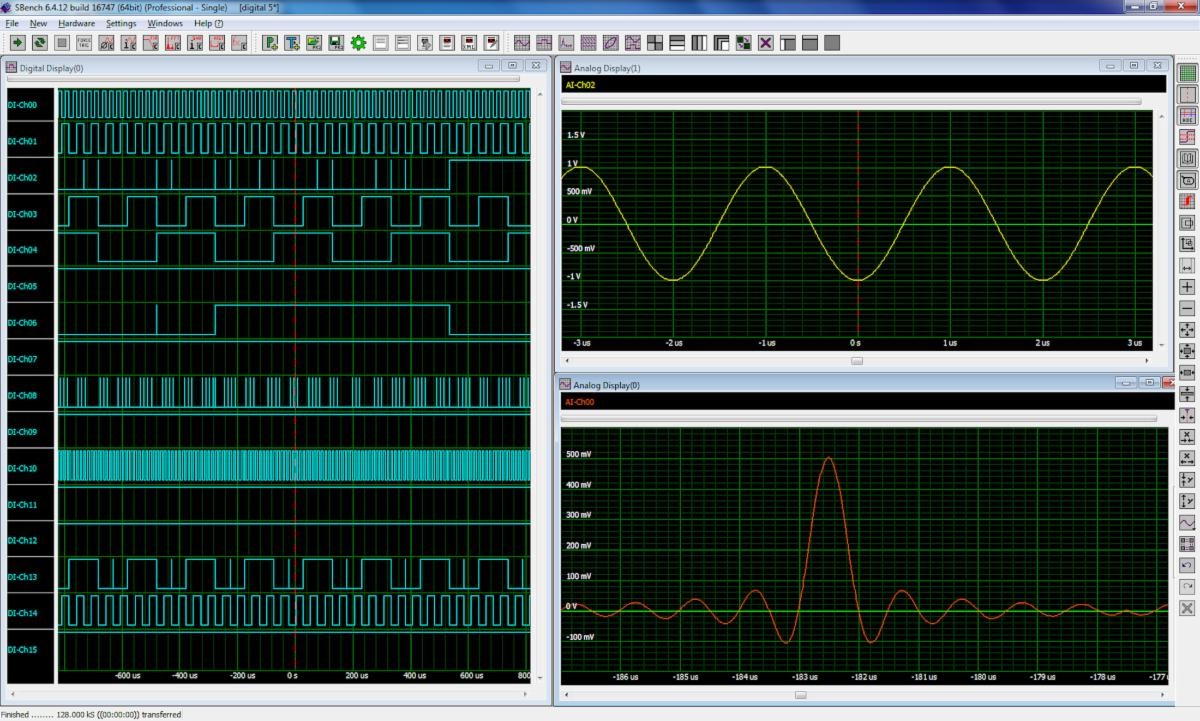LXI-digitisers get extra I/O lines for mixed-mode testing
Spectrum Instrumentation has extended the capabilities of its popular LXI-digitisers by adding a powerful mixed-mode testing option. This new option is available on four different models, all featuring 8 analogue input channels that synchronously sample signals at rates up to 5 MS/s, 20 MS/s, 40 MS/s or 125 MS/s with 16-bit resolution.
The new option adds 8 digital lines to the 3 multipurpose I/O lines that come as standard with each unit, increasing the number of digital input channels to 11 in total. The enhanced digitisers simultaneously acquire both 8 analogue and 11 digital signals in a fully synchronous fashion, with easy access to all 19 channels via front panel BNC connectors (see figure 1).
The units come complete with software and all the tools necessary to integrate them into virtually any test system, including mechatronics, robotics, vibrational studies, control systems, data bus analysis, automation, motion control and more.

Fig. 1 - Front panel BNC connectors allow easy access to 8 analogue and 11 digital inputs = 19 synchronous channels in total
Easy remote control
Controlling and accessing the data collected by the digitiserNETBOX is done by simply connecting it with GBit Ethernet to a host computer (e.g. laptop or workstation) or anywhere on the corporate network. This allows easy remote control and, as the units are fully programmable, makes them suitable for most automated testing applications. The digitiserNETBOX is fully LXI compliant (following Core 2011 Specifications) and offers an IVI compatible interface for the IVI Scope and IVI Digitiser classes.
Spectrum’s own SBench 6 Professional software comes as standard with the products. This program lets users control all the modes and settings of the hardware via a simple, easy-to-use interface. The software also has a host of built-in features for data analysis and documentation.
These include FFT analysis, analogue and digital waveform display modes, XY display, a function interpreter, parameter measurements, export into ASCII, Wave, MATLAB, comment functions (for annotating signals or displays) and even a report and printout function.
Flexible signal conditioning and triggering
The analogue input channels of the digitiserNETBOX products provide software selectable, single-ended and differential input modes. Each channel has its own ADC and an independent amplifier. The amplifiers have selectable input impedance (50 Ohms and 1 MOhms) with calibrated gain ranges from ±200 mV to ±10V full scale.
Variable gain allows input signals to be scaled, so that they cover the full dynamic range of the ADC and therefore maintain the best possible measurement accuracy. All the channels are synchronously clocked so that phase error is minimised and inter-channel measurements can be made with absolute precision.
Large on-board memories also make it possible to acquire and store the longest and most complex of waveforms.
The units include an array of smart triggering capabilities and acquisition modes. Triggering on problem signals (like glitches, spikes, bursts or even when specific logic patterns occur) allows storing the recorded waveforms in the most memory efficient way possible. Transient capture, Multiple (burst) Recording, Gated Sampling, ABA sampling and data streaming (FIFO) modes are all supported.
For mixed-mode-testing and programming
When using the DN2.59x-08-Dig option, the digital data is stored inside the 16-bit analogue samples by reducing a channel's resolution. This allows phase synchronisation of both the analogue and digital signals, as the one-bit digital signals are placed in the high order bits of the analog waveforms.
As an example, if eight digital channels are in use then the resolution of the analogue channels would be reduced from 16 to 14 bits and two of the digital signals would be appended to each analogue channel of the digitiser.

Fig. 2 - Spectrum's SBench 6 program shows digital and analogue waveforms
Software drivers allow customised setups that can generate perfectly matching mixed-mode solutions (see figure 2). The option is fully supported by the complete Software Development Kit (SDK) which includes programming using C++, C#, VB.NET, Python, JAVA, LabVIEW or MATLAB. The SDK is included as standard with every unit. Spectrum's own software, SBench 6, also supports the major part of the option's functionality.
Four different digitiser models
The new option DN2.59x-08-Dig could be ordered with these 8-channel digitiserNETBOX products: DN2.591-08 (5 MS/s), DN2.592-08 (20 MS/s), DN2.593-08 (40 MS/s) and DN2.596-08 (80/125 MS/s). These digitisers are available with immediate delivery and come with a full five-year product warranty as standard.










